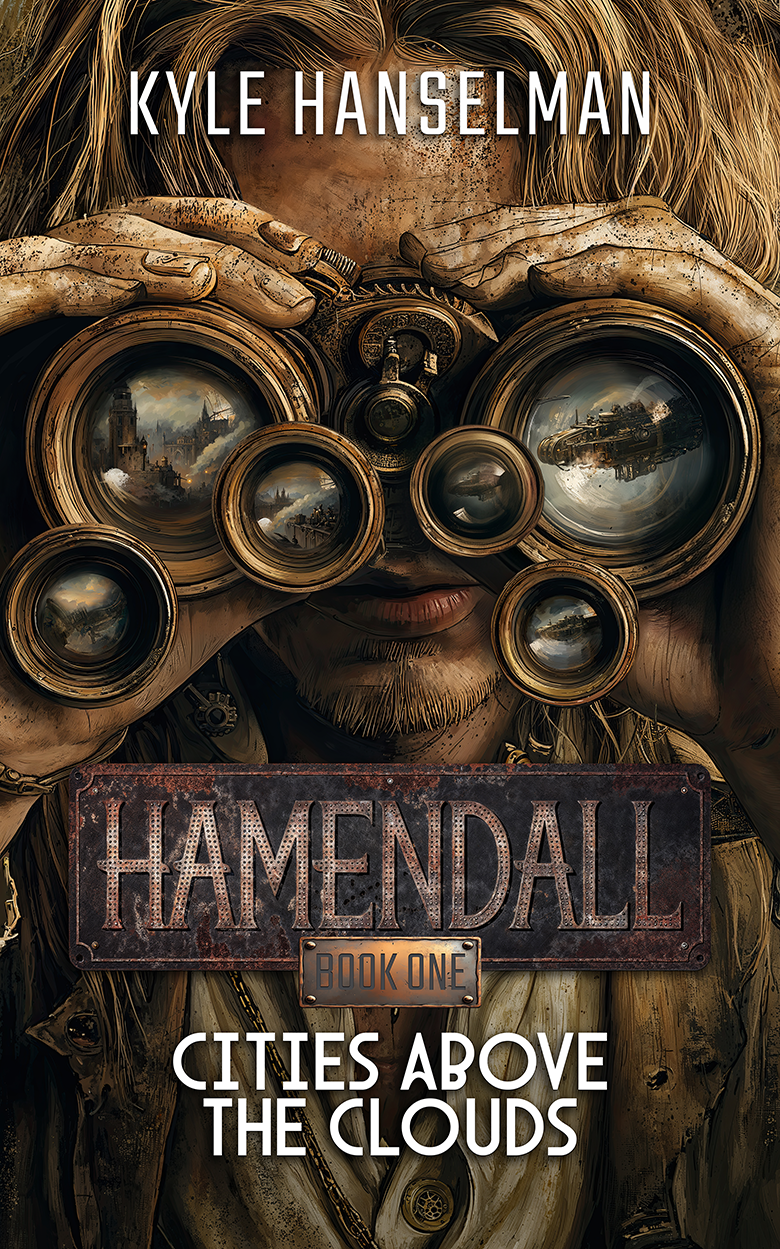KYLE HANSELMAN
Video Game Level Designer
Big News! Hamendall Book One: Cities Above The Clouds Has Released!
Follow Mikayel Goenvelt as he finds himself thrust into a political mess far larger than himself. Join him through action and adventure as he tries to prove his innocence and discovers the connections of Skyworld run deeper than he ever imagined in this steampunk inspired post apocalypse novel!
ZERO DAY
CITY FINAL IMAGES
A heavy emphasis was placed on verticality and navigability when laying out this city map. Despite the oppressive, concrete surroundings, we wanted players always to know where they were but never find the navigation boring. The city was constructed in layers, and each began to take on a unique gameplay feel, so the city was more like 2 or 3 levels all in one. Thanks to this, players found the level an exciting place to be.
DISTRICTS DOCUMENTATION
When Zero Day evolved to a smaller, more focused scope, I got the pleasure of creating a GDD to help align the team on the new design and goals for the project. My goal wasn't to create a comprehensive list of every mechanic and metric but to explain the main features of the game and how they worked together, providing examples and detail where needed. Please keep in mind this is incomplete.
DISTRICT SKETCHES
The districts focused on themed multi-block segments of the city, each with various objectives, enemies, loot, and other activities. Through testing, we found 150x150m was ideal for making each district feel large and complex enough for players to strategize without feeling so large that it was out of scope for our team.
CYBERSPACE DESIGN BOARD
Cyberspace posed many challenges across all departments; considering it was our primary USP, these issues had to be solved. I worked closely with the product owner, tech lead, and art director to develop a Cyberspace design that was elegant and easy to read but felt deep and powerful. The answer was deemed the Node System and sought to simplify Cyberspace to connecting nodes and completing simple minigames for consistent interactions; we would then allow players to choose the result of those actions through their build.
CITY SKETCHES
The layout of the city at large was a series of concentric circles with a tower in the center; this design helped players orient themselves and navigate quickly. We also split the map into segments and planned to give each a unique theme to improve players' understanding of their location further. However, this large map needed to be denser to support the gameplay, and I began to design individual blocks; each would serve a tight and exciting experience. No matter where players and enemies were, there was room for memorable encounters. As we explored this idea, we realized that this large city was out of scope and presented some fundamental design challenges, so we restructured our approach to the levels.
FORWARD
Zero Day was a Puny Human internal project I worked on between contracts and during my free time to create a prototype from March 2021 to March 2023. Zero Day underwent many changes during that time before it was ultimately canceled. Below is a small accumulation of my work on the project over two years, some of the designs I documented, and what I learned. I greatly appreciate that Puny Human has allowed me to present this project on my portfolio, as it was an incredible learning experience for me, and I loved Zero Day.
CITY DESIGN CONCEPT
When my work began on Zero Day, it was heavily inspired by games like Tarkov and Hunt: Showdown. We wanted a large map that players would join and leave at will. When players joined, they aimed to complete contracts, obtain loot, and try to survive. In their way were AI enemies and other players competing for that same loot. Different teams of players would organically interact with each other and fight to the death to steal each other's loot. All players had a primary objective to complete to allow extraction, but many other optional goals littered the level, offering more rewards. I created an enormous, highly vertical city that could act like a lite sandbox to accomplish this loop.
DISTRICTS DESIGN CONCEPT
While working on the City Design, Puny Human realized that such a large, complex level with non-traditional multiplayer on top of the existing complexity of a dual-space looter shooter was simply out of scope. For that reason, the Districts Design was born. This design still focused on PvPvE looting and shooting but with smaller levels chained together, which progressed linearly. This design decreased the scope significantly, made room for post-release content, and did so without changing our core or pillars. It is also the design I spent the majority of my time on Zero Day crafting.
DISTRICTS IMAGES
As we worked on the prototypes for the Districts Design, art direction, and assets began to trickle down. This new direction took us away from the concrete brutalist architecture from before. It moved toward a 3D-printed industrial look, which gave Zero Day a unique look and inspired many of the later-level designs and how I dressed the spaces I built. This art style also worked better with the tighter spaces we moved toward with the Districts.





























